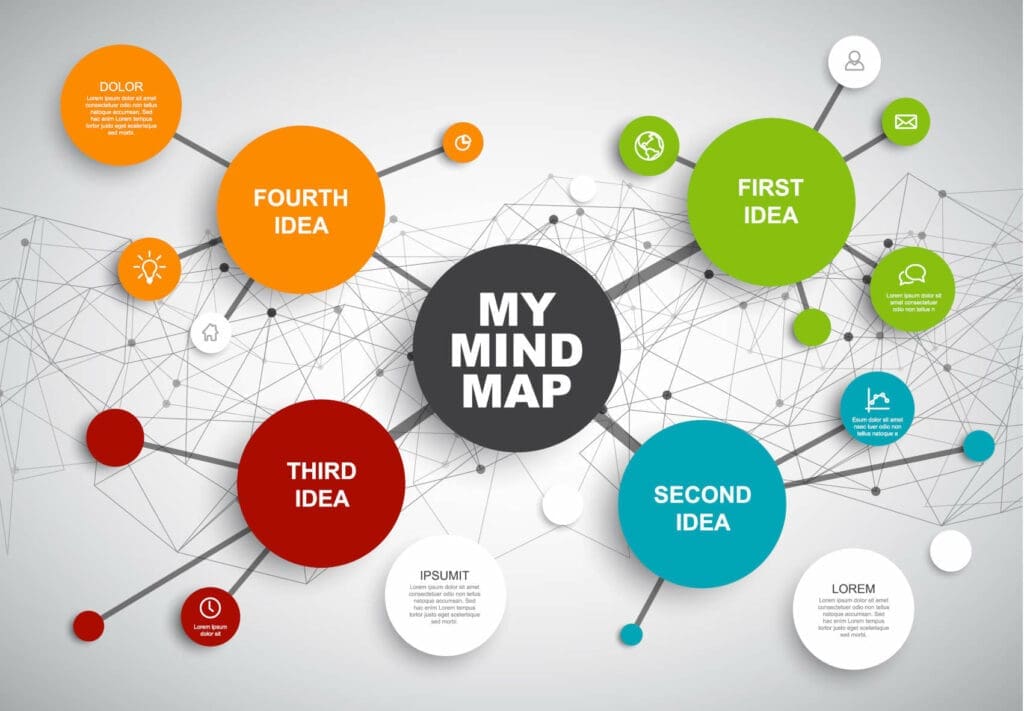
Mind Map
A mind map is a useful technique for generating ideas and exploring methods that help you question and analyse any topic:
Mind mapping is a technique that helps you record ideas on paper with minimal restrictions, allowing your thoughts and creativity to flow freely. It encourages self-expression and the development of new ideas.
It also supports critical analysis and reflection, providing mental distance and fostering a questioning mindset. For example, if someone proposes an idea, writing it down in a mind map on a draft page can help you examine and evaluate it independently; Almost as if you were discussing it with someone else.

It can also simply involve identifying limitations to develop an idea; Essentially, spotting the “Risks” behind it. In IT and management, this process is known as Risk Management. The objective is to uncover the risks and limitations associated with ideas and projects around you.
The potential downside of using mind maps is sometimes discussed in the context of the Cartesian School of Philosophy, led by the famous philosopher René Descartes.
The Cartesian method takes a very pragmatic view. Its goal is to measure and identify elements of reality to create a kind of cartography of anything; Similar to a dictionary. This approach seeks to define and categorise the world in great detail.
However, the Cartesian approach has been criticised for the risk of oversimplifying complex ideas. Not everything can be measured or defined so neatly. To illustrate, it is like trying to summarise the universe in just a few ideas; An impossible task, as the universe is far more complex. Still, in certain contexts, the Cartesian approach can be useful, allowing us to create, study, or explain concepts that might otherwise be difficult to grasp.
Finding Ideas by Talking to Others
Another way to generate ideas is by speaking with someone else; Or even with a group. As the French very prolific writer, Jacques Attali noted, “You can find ideas when speaking to others.” For instance, not preparing a speech before an event or conference and instead improvising can help ideas emerge spontaneously. Speaking without a script frees the mind and allows new ideas to surface naturally. Jacques Attali was invited at France Culture radio for different event and radio show: (Link), (Link), (Link).
Philosophical Walks
Some philosophers also encouraged walking as a good way to engage in philosophy.
Plato, the famous Greek philosopher, recommended walking as a way to support philosophical thinking; Allowing both the body and mind to be in motion. When the body is in movement, the mind can engage more freely, helping with debate and reflection.
Much later, the philosopher Immanuel Kant was also known for his daily walks, always taken at the same time and along the same path every day.

Comments are closed